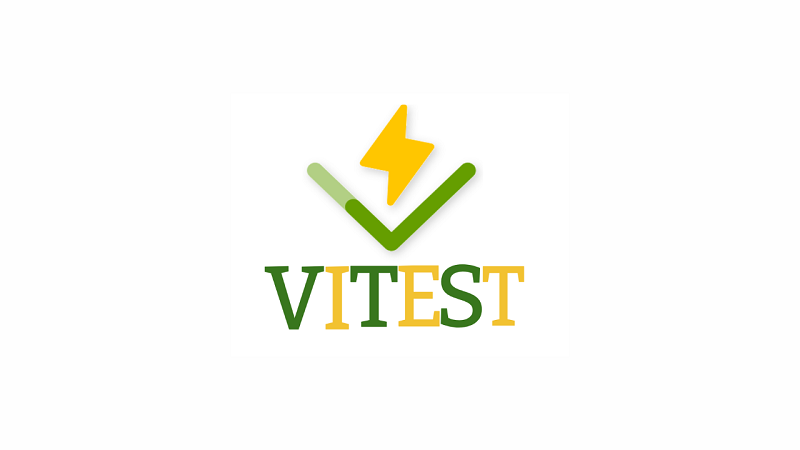Vitest with React Testing

撰寫測試一直都是確保程式碼可靠性的一個重要環節,通常在 React 中,我們可以選擇使用 Jest 或 Vitest 根據專案需求來撰寫 Unit Test,不過 Vitest 在 Vite 專案中整合較為容易。
前言
為何選用 Vitest 而不是 Jest?
通常在 React 專案中,使用 Jest 一直是最常見的 Unit Test 工具,不過隨著 Vite 崛起之後,Vitest 就漸漸變成 React 社群中熱門的 Unit Test 工具。
主要是因為它與 Vite 有著極好的整合性,如果是 Jest 的話,需要額外安裝 jest-vite 等等工具,才能夠在 Vite 專案中使用,如果你的專案又整合了許多套件,那環境設定的複雜度又會再提升。
而 Vitest 則只需要安裝 vitest 就能夠在 Vite 專案中使用,能夠更快速地運行測試並且擁有與 Jest 相似的 API,你可以把它當成 Jest 的 Pro 版。
安裝 Vitest
安裝可以搭配 官方文件 來進行。
使用 npm 安裝:
npm install -D vitest或是使用 pnpm 安裝:
pnpm add -D vitest設定環境
安裝完 Vitest 後,接下來需要在 Vite 配置檔案中設定一些選項,讓 Vite 知道如何運行測試。打開你的 vite.config.ts 或 vite.config.js 檔案,並加入以下配置:
import { defineConfig } from 'vite';import react from '@vitejs/plugin-react';
export default defineConfig({ plugins: [react()], test: { globals: true, // 啟用全域測試的 API,避免每次都需要 import environment: 'jsdom', // 模擬瀏覽器環境來運行測試 setupFiles: './src/vitest.setup.ts', // 你的初始化檔案,用來設置測試環境 },});接著,在 src 資料夾中創建一個 vitest.setup.ts 檔案,並在裡面加入 jest-dom,這可以提供更多的 DOM 斷言方法。
import '@testing-library/jest-dom';接下來設定一下 script,為了之後方便執行測試,我們可以在 package.json 中加入以下:
"scripts": { "test": "vitest"}直接跑 npm run test 或 pnpm test 就可以看到測試結果了。
如果有 husky 的話,也可以在 package.json 中加入以下:
"husky": { "hooks": { "pre-commit": "vitest" }}這樣每次在 commit 之前都會先執行測試了。
盤點測試範圍和測試目標
首先撰寫測試之前需要先搞清楚這次測試範圍涵蓋和測試目標,例如:
- 測試應該模擬使用者與介面互動,而不是實作細節。
- 需要測試不同狀態,e.g. loading、error、success。
- 需要測試 Side Effect,e.g. useEffect、useCallback、useMemo,確認元件能正確 onMount 或 onUnmount。
- 測試 Event Handlers,e.g. onClick、onChange、onSubmit 等能如預期運行。
- 測試 Error Boundaries 能正確 catch error,並顯示 fallback。
諸如此類
建議可以看看 Kent C. Dodds 大大的 《Testing JavaScript》 這篇文章,教你如何有效地撰寫測試,提升程式碼品質,其中也關注 TDD 和 BDD 流程。
撰寫測試
開始撰寫測試需要先建立 __tests__ 資料夾,並在裡面建立 .test.ts 檔案,這樣 Vitest 才會知道要跑哪些測試。
命名原則通常參考 Component 或 Hooks 的命名,例如 Button.test.ts、useCounter.test.ts,至於資料夾沒有硬性規定要建在哪,可以根據專案結構來決定就好了。
簡單的範例如下:
import { describe, it, expect } from 'vitest';
describe('My Component', () => { it('should render correctly', () => { render(<MyComponent />); expect(screen.getByText('Hello')).toBeInTheDocument(); });});由於 Vitest 是基於 Jest 開發,所以也可以使用 Jest 的一些語法。
像是 describe、it、expect 等等,這些都是 Jest 的 API,可以參考 Jest 的文件來撰寫測試。
不過現在 AI 工具很方便,以 cursor 為例,你可以先擬好 test case,然後讓它幫你生成測試,提高撰寫測試的效率。
測試工具
Snapshot Testing
Snapshot Testing 是一種測試方式,它會將元件的渲染結果保存成快照,下次運行測試時,如果發現快照有變動,就會顯示差異,這樣可以避免 regressions。
在 Vitest 中,可以使用 toMatchSnapshot 來進行 Snapshot Testing。
import { describe, it, expect, render, screen } from 'vitest';
describe('My Component', () => { it('should render correctly', () => { render(<MyComponent />); expect(screen.getByText('Hello')).toMatchSnapshot(); });});跑完之後會看到在該資料夾下生成一個 __snapshots__/Button.test.ts.snap 檔案。
Mocking
Mocking 也是一種測試方式,它會模擬某些行為,例如 API response、第三方套件行為等等,這樣可以避免測試受到外部因素的影響。
在 Vitest 中,可以使用 vi.mock 來進行 Mocking。
import { describe, it, expect, vi, render, screen } from 'vitest';import axios from 'axios';
vi.mock('axios', () => ({ get: vi.fn(),}));
describe('My Component', () => { it('should render correctly', () => { render(<MyComponent />); expect(screen.getByText('Hello')).toMatchSnapshot(); });});Coverage
Coverage 能夠計算測試的覆蓋率,例如函式的覆蓋率、分支的覆蓋率等等。
在 Vitest 中,可以使用 vitest coverage 來查看覆蓋率。
npm run test -- --coverage或是使用 pnpm 來查看:
pnpm test -- --coverage總結
如果是要找和 Vite 整合性好的測試工具,Vitest 大概是首選,不過 Vitest 的 API 與 Jest 還是有些許不同,需要花時間熟悉一下,不過整體來說,Vitest 的學習曲線比 Jest 平緩許多,尤其是對於已經使用 Vite 的開發者來說,它的設定與整合過程更加順暢。
參考來源
Licensed under CC BY-SA 4.0
Unless otherwise noted, content on this site is licensed under CC BY-SA 4.0. You are free to share and adapt with attribution.
